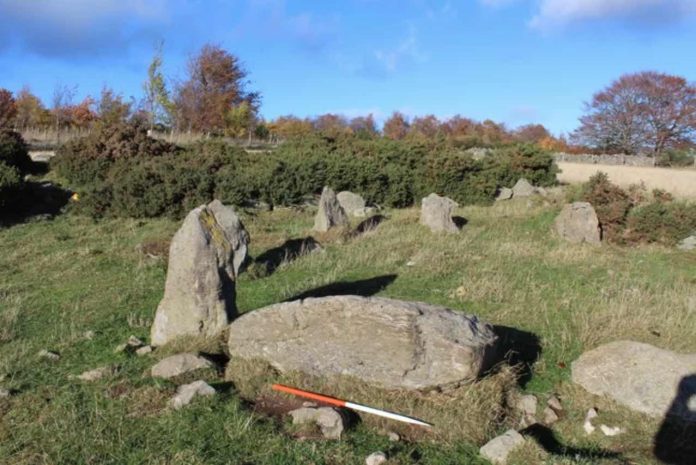The stone circle at Holmhead in Aberdeenshire may only date back to the 1990s, but this latest architectural find is still a treasure, writes Martyn McLaughlin
The late Spike Milligan once said that when he died, he hoped to be laid to rest in a washing machine, for no other reason than to confuse the archaeologists of the future.
Those who make a living by combing through the detritus of the past in order to better understand who we are and where we come from deserve sympathy. It can be a gruelling, fruitless task, waged in all weathers.
But in a conservative discipline where context is everything, it is nice to see archaeologists can also see the funny side of things.
The defrocking of the Holmhead stone circle in Aberdeenshire, which until recently was believed to date back to the Bronze Age, shows how those who retrace the journey made by our descendants are prone to the odd misstep.
Only last month, Historic Environment Scotland and Aberdeenshire Council declared it to be an authentic prehistoric site. This week, a farmer who once worked the land on which is located disabused them of such notions. The stone circle, he revealed, could be traced only as far back as the era of Britpop and combat trousers.
As Neil Ackerman, the local authority’s historic environment records assistant, humbly pointed out on Twitter, the revelation is unlikely to grace his CV in future.
“If you are having an awkward day at work, at least you’re not that guy who identified a new prehistoric stone circle to the press that now turns out to be about 20 years old,” he wrote.
It is refreshing to see a professional freely admit to making an error and do so with such good humour. Mr Ackerman has been in his post for less than three years, but his candour means he can look forward to a bright future. As well as providing some levity, the misclassification has helped promote the north east’s established archeological treasures. Who among us would have known of Aberdeenshire’s unique bounty of recumbent stone circles were it not for the imposter in their midst?
In any case, who are we to judge what is real or fake, or to differentiate those creations that have meaning from the ones that are mere whimsy? For all that technology has aided research into our origins, the stone circles specked across Scotland and further afield remain shrouded in mystery, with the purpose of their creation, the manner of their construction, and the choice of their location as elusive as ever. There are countless competing theories which may offer fragmentary answers, but my favourite proposition is that the people who erected them did so simply to cause a bit of good-natured mischief. If that is the case – and there is no good reason why not – then our Aberdeenshire farmer was keeping this noble tradition alive, albeit inadvertently (he reportedly said it wasn’t designed “to con anyone”, but simply to be a “garden feature”). Holmhead may be the punchline to a joke that started with Callinish or Stennesh.
The search for definitive truths and the contested hypotheses surrounding our stone circles is made to look foolish when you consider the reverence afforded to the pretenders.
Take the Druid’s Temple in the Yorkshire village of Ilton, for example. A cluster of stones closely resembling Stonehenge, its eerie formation has given rise to scurrilous tales of satanic worship and archaic rituals.








